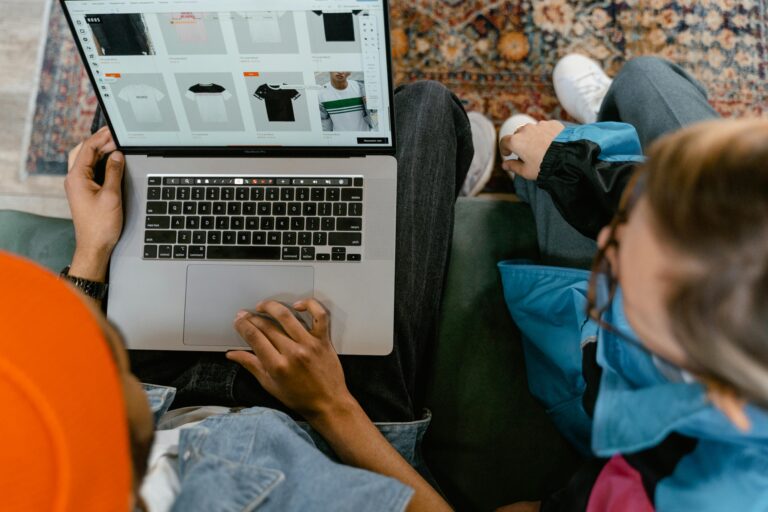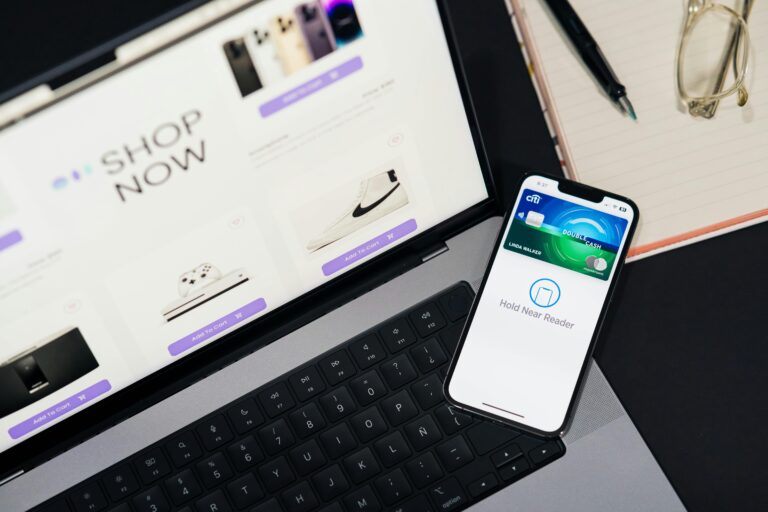Unlocking 2025’s E-Commerce Boom: From Personalized Experiences to AR Shopping Tools You Can’t Ignore
The way we shop online is changing big time. By 2025, you won’t see much of a difference between clicking online or walking into a store. It’s all gonna mix into one, with some smart AI knowing what you want before you do, AR that lets you try stuff without leaving home, and social media turning into shopping havens. For brands, it’s not just about keeping up. It’s all about changing how they meet customers—fast, creative, real—that’s what counts now. Let’s dive in, explore the e-commerce trends shaking things up. Figure out how you can use them to do well.
1. Hyper-Personalization: Predicting Your Desires Before Expressing Them
Think of shopping like magic now. It’s 2025 and AI personalization is all the rage. Brands don’t just guess—they know. They use algorithms to look at your past online visits, your social media likes, and even the weather near you. Stores like Adore Me and Dou Lashes get it just right. Let’s say it’s gonna rain—bam! Your top clothes brand shows you waterproof jackets right when you open their app.
Why it’s important:
- 71% of shoppers want things made just for them when they’re buying online.
- AI chatbots sort out 40% of customer questions, giving quick advice on sizes or fixing payment issues—no humans needed.
- Content changes on the spot. Fans of fancy skincare see special product picks, and deal seekers grab quick sale deals.
Pro Tip: Brands like Asus use tools like Improvado to pull data from different places all together—makes things super focused. And? Email opens shot up 352% for thank-you notes made personal.
2. AR Shopping: Your Living Room Is the New Fitting Room
Augmented reality is dismantling the “will it fit?” anxiety that plagues online shopping. By 2025, AR tools will let you virtually try on makeup, visualize furniture in your space, or even test-drive a new hairstyle—all through your smartphone camera. IKEA and Warby Parker have already pioneered this, but 2025 will see AR explode into mainstream retail, slashing return rates by 30% as customers gain confidence in their purchases.
The Numbers Don’t Lie:
- The AR market is projected to hit 723 billion by 2034, up from 20 billion in 2023.
- 52% of shoppers say AR boosts their likelihood to buy, especially for high-consideration items like furniture or luxury goods.
Case Study: Beauty brands like Kylie Cosmetics use AR try-ons on TikTok, where users can test lipstick shades in seconds—a tactic that’s driven 38% of total revenue for some brands.
3. Social Commerce: TikTok and Instagram Are the New Main Street
Forget scrolling mindlessly—social media is now a discovery-to-checkout juggernaut. Platforms like TikTok and Instagram have embedded shopping features so seamless that 63% of Facebook users shop directly within the app. By 2025, social commerce will account for $6.2 trillion in revenue, with Gen Z leading the charge.
Key Tactics for 2025:
- Shoppable Livestreams: Brands host live product demos where viewers click to buy in real-time.
- UGC-Driven Campaigns: User-generated content (think unboxing videos or DIY hacks) builds trust faster than polished ads.
- TikTok Shop Integration: Pilot programs in the U.S. and U.K. let users purchase trending items without leaving the app.
Stat Alert: Dou Lashes attributes 38% of its revenue to Instagram Shops, proving that impulse buys thrive in a scroll-happy world.
4. The Checkout Revolution: Invisible Payments and BNPL Dominance
Cart abandonment rates have long haunted retailers, but 2025’s checkout innovations are turning the tide. “Invisible payments”—where transactions happen in the background—and Buy Now, Pay Later (BNPL) options like Apple Pay Later are reducing friction.
What’s Changing:
- 50% of millennials use BNPL for splurge-worthy items, prioritizing flexibility over upfront costs.
- Facial recognition payments are rising, with biometric authentication cutting checkout time by 70%.
Caution: While BNPL boosts conversions, brands must balance convenience with responsible lending. Over 40% of BNPL users report financial stress, urging retailers to promote transparency.
5. Sustainability: The Silent Sales Driver
Eco-friendly shopping’s a must now—no longer just for a few. By 2025, most folks—about 57%—will choose brands that care for the planet, even if it costs a bit more.
Strategies Winning Hearts:
- Carbon-Neutral Shipping: FedEx’s 2040 carbon-neutral pledge is a blueprint for retailers.
- Resale Platforms: Lululemon’s “Like New” site and ThredUp partnerships let shoppers buy pre-loved items, tapping into the $44 billion secondhand market.
- Transparent Sourcing: Brands sharing supply chain details see 50% higher trust from customers.
The Future Is Now: Key Stats at a Glance
| Trend | Key Statistic | Impact |
| AI Personalization | 91% of consumers prefer tailored offers | Higher conversion rates, loyalty |
| AR Adoption | 52% of shoppers use AR before buying | Reduced returns, increased confidence |
| Social Commerce Growth | $6.2T revenue by 2030 | Direct sales via social platforms |
| BNPL Usage | 50% of millennials use BNPL | Larger cart sizes, repeat purchases |
| Sustainable Shopping | 44% buy more secondhand goods | Brand loyalty among eco-conscious buyers |
Your Move: How to Stay Ahead in 2025
- Invest in AI Tools: Platforms like Nosto use vector search to turn vague queries into precise product matches, boosting sales by 1024% for early adopters.
- Experiment with AR: Start small—virtual try-ons for accessories or AI-generated styling tips—then scale as engagement grows.
- Optimize for Social: Partner with micro-influencers for authentic UGC, and leverage TikTok’s shoppable ads.
- Simplify Checkouts: Offer BNPL and biometric payments, but pair them with clear disclaimers to protect customers.
- Commit to Transparency: Share your sustainability journey openly—it’s a loyalty magnet.
Final Thought: The 2025 e-commerce boom isn’t just about technology—it’s about empathy. Whether through AI that understands your cravings or AR that erases buyer’s remorse, the winners will be those who make every interaction feel human. The tools are here. The question is: Will you use them to build a brand that’s not just seen, but felt?
Ready to transform your strategy? Explore how FedEx’s 2025 E-Commerce Report can guide your next move—or risk fading into the background noise of a trillion-dollar industry.


